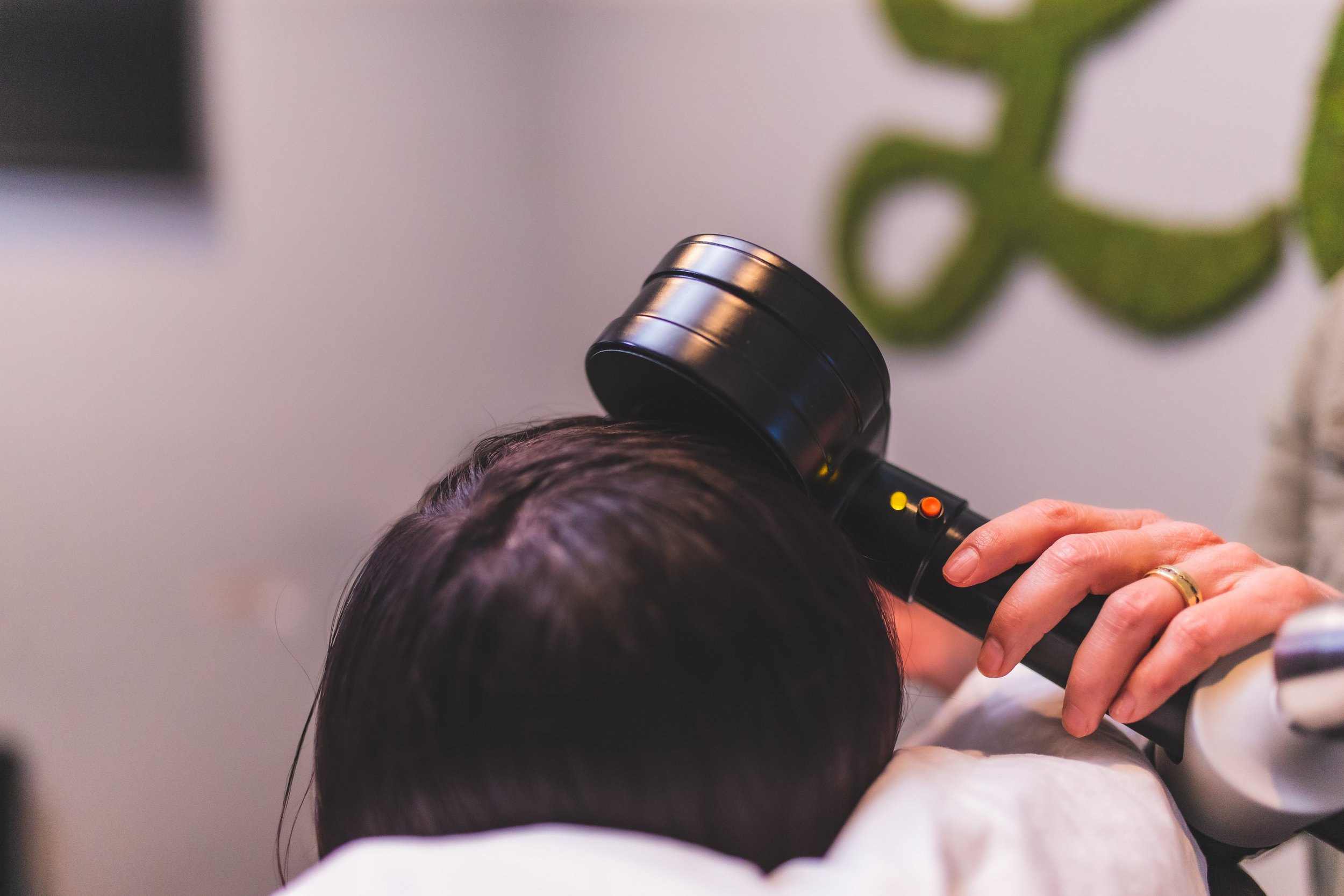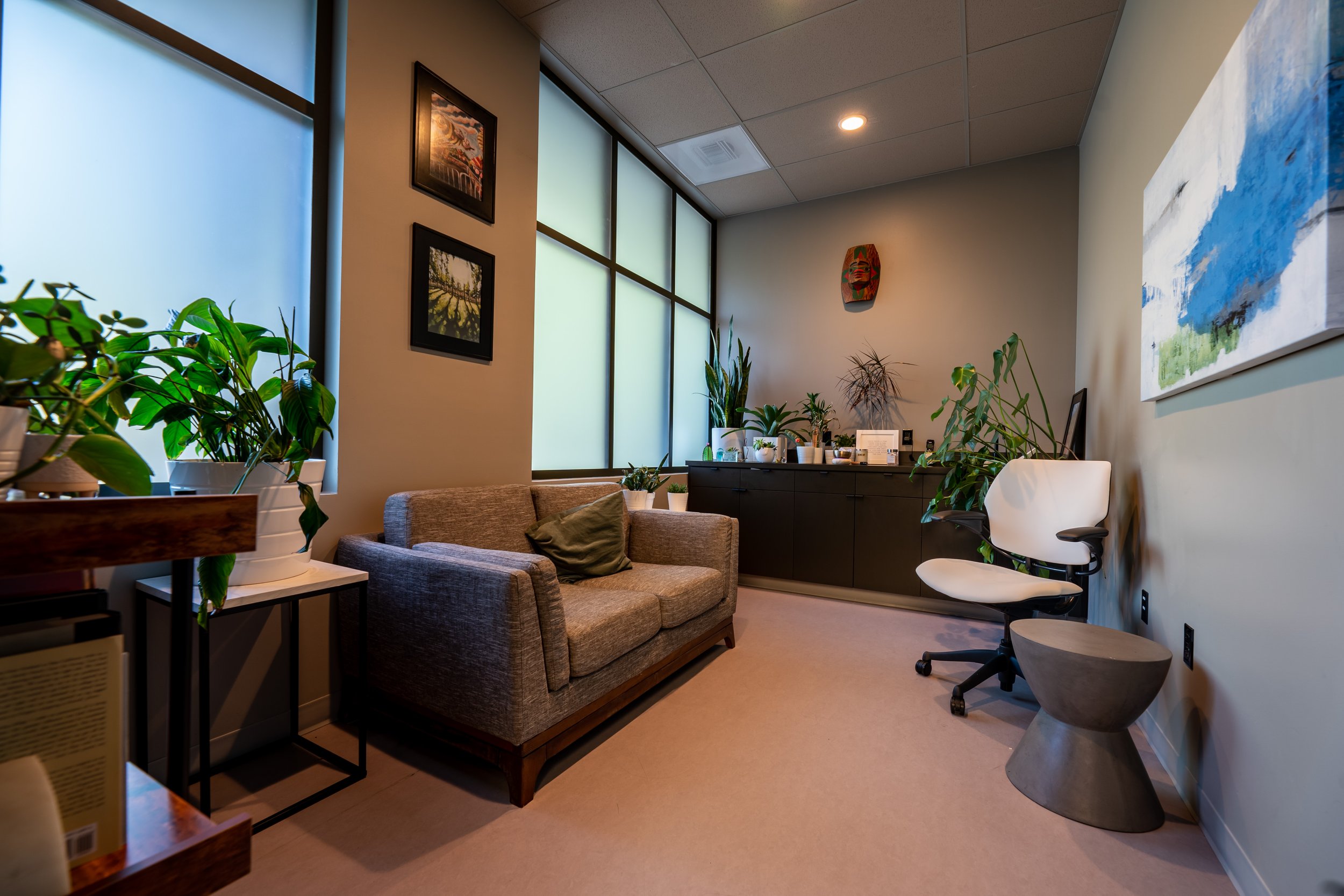
TRANSCRANIAL MAGNETIC STIMULATION
WHAT IS TRANSCRANIAL MAGNETIC STIMULATION?
Transcranial Magnetic Stimulation, or TMS, uses an MRI-strength magnet with a focal beam to directly activate areas of the brain that are not functioning appropriately. It involves the placement of a magnetic coil over the regions we want to activate. Gentle pulses of magnetism directly stimulate the neurons we target, which helps them perform their functions more effectively and without fatigue.
We use TMS as part of an integrative program to directly stimulate parts of the brain that we have identified through our diagnostics as needing attention. By coupling direct stimulation via TMS with exercises that target those same brain areas, we usually see rapid gains in function and endurance. Transcranial magnetic stimulation is an extremely effective therapy, and plays an important part of many of our NeuroRescue Programs.
HOW DOES TRANSCRANIAL MAGNETIC STIMULATION HELP ME?
TMS uses an electromagnetic coil that is placed specifically over areas of the brain that we have determined need direct activation. The coil generates a highly concentrated magnetic field, which is rapidly cycled on and off. The magnetic field reaches roughly 2-3 centimeters into the brain directly beneath the treatment coil. As the magnetic field moves into the brain, it produces very small electrical currents directly within the cerebral cortex. These electrical currents stimulate neurons within the brain, which causes them to release neurotransmitter chemicals and stimulate other neurons. With repetitive treatment, TMS therapy builds neuronal endurance, metabolic capacity, and connectivity with other neurons and pathways. TMS can significantly improve rates of neuronal firing and change the brain’s level of excitability.
TMS was initially FDA-approved for the treatment of depression, through direct stimulation of the left dorsolateral prefrontal cortex. The DLPFC is an important center for mood regulation, and directly stimulating this region with repetitive TMS has been shown to be extremely effective in relieving chronic refractory depression. The use of TMS is by no means limited to depression. TMS has been shown to be extremely helpful for a variety of neurological conditions. Some of these include:
Mental Health Conditions | Concussions and Traumatic Brain Injuries | Dizziness and Vertigo | Headaches and Migraines | Neurodegenerative Disorders | Chronic Pain | Movement Disorders | Neurodevelopmental Disorders | Dysautonomia | Strokes and Vascular Disorders | Peripheral Nervous System Disorders
WHAT TO EXPECT:
Every TMS protocol begins with a consultation, during which one of our psychiatric providers determines if you are an appropriate candidate for the therapy. They will perform an intake to learn if you have any contraindications, ensuring that TMS is a safe therapy for you. They will provide you with a series of questionnaires and rating scales that allow us to gauge your symptoms and track your progress through treatment. You will then be taken to a treatment room, and positioned in a motorized recliner, similar to a dental chair.
You will be given earplugs to wear during the procedure.An electromagnetic coil will be placed against your head and switched off and on repeatedly to produce magnetic field pulses. You will hear a clicking sound and feel a tapping sensation under the coil. The pulses will be delivered in short bursts of a few seconds.
Your clinician will perform a series of tests to determine the location of your primary motor cortex, a landmark that allows us to localize other areas we may want to stimulate. They will move the coil around a region of your forehead, using the pulses to map the location of your primary motor cortex. When the motor cortex is located, you will experience a slight twitching of your opposite hand. They will then perform additional tests to determine the appropriate intensity for your treatment.
FAQs
-
TMS is a tapping sensation on your forehead. It has been likened to everything from someone poking your forehead to get your attention to being tapped on the skull by an electric woodpecker. TMS is a very unique sensation, and in most cases, not at all uncomfortable. While some people have difficulty tolerating the first session or two, other people find it very relaxing. It is not uncommon for our patients to fall asleep during TMS sessions.
-
Yes. TMS is an extremely safe therapy, with rare side effects. There are contraindications to TMS, including histories of seizures and some types of metal implants. If we have allowed you in one of our TMS chairs, it is because you have passed all of the screening that shows it to be a safe therapy for you.
-
Very much so. We usually see remarkable improvement in our TMS patients. As we use TMS as part of our integrated NeuroRescue Program.
-
For most people, no. On occasion, patients may describe headaches following TMS therapy, however these are rare and generally resolve readily on their own. The vast majority of our patients have no side effects from therapy, only positive benefits.
LET’S GET YOU BACK TO LIVING YOUR BEST LIFE
“Dr. Zielinski transformed the quality of my life after I suffered a head trauma, 14 years ago. I suffered from vertigo, headaches, visual distortion and imbalance. MD’s told me I had to live with these symptoms. Today I no longer suffer from these thanks to Dr Z. His approach is cutting edge and the results are miraculous. If one or two symptoms return a visit to Dr. Z. clears them up. He is the most competent, committed and compassionate doctor I have been treated by. His willingness to accommodate my needs when they arise has been unparalleled. There are not words to express my gratitude or respect.”

-
We use advanced neurodiagnostic technologies and cutting edge neurorehabilitation strategies that are unique to your brain and condition.
-
We use high frequency treatment over 5-10 days, to bring you maximum results in the shortest time possible.
